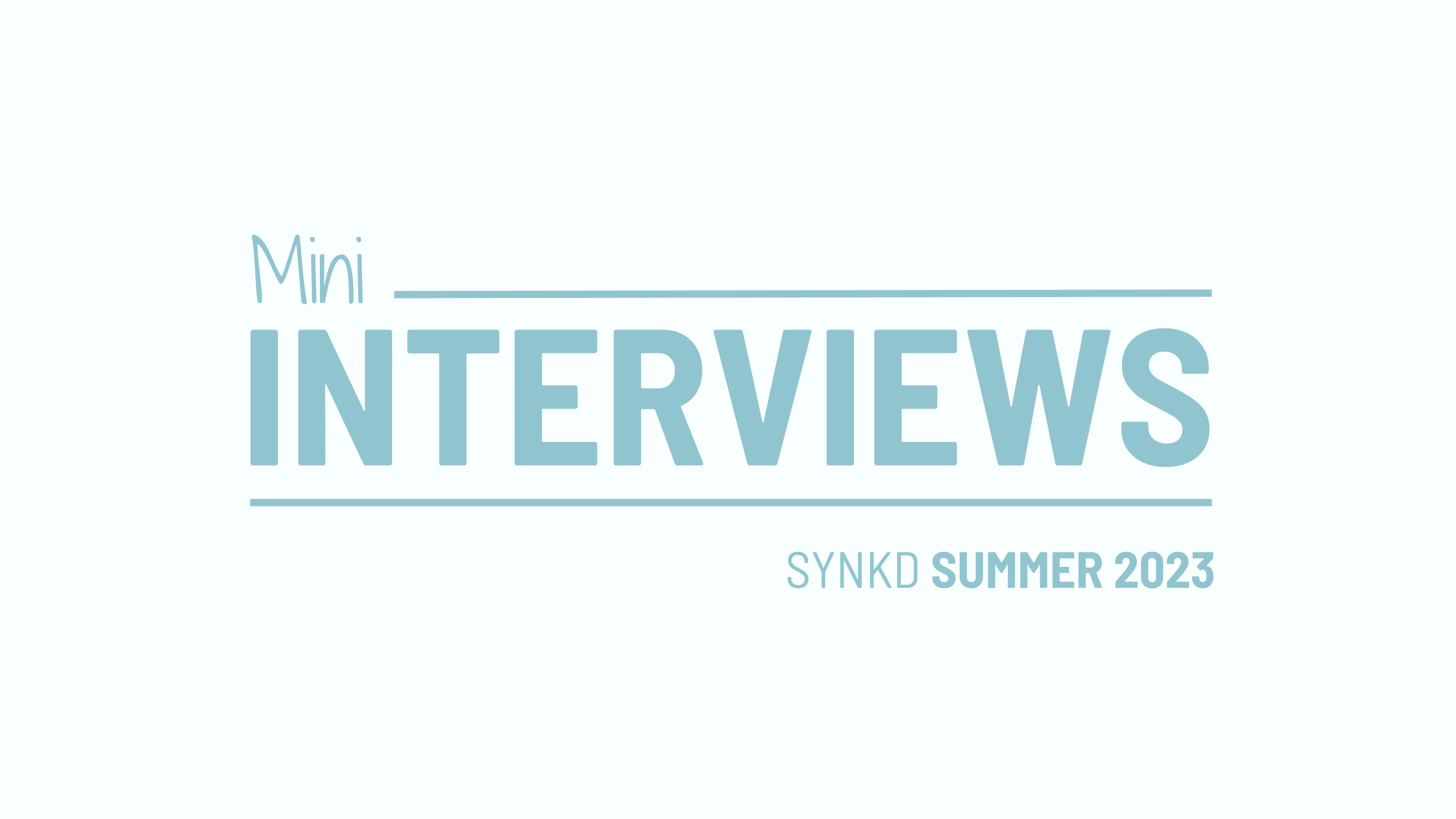1 min read
Part I: What is Emotional Intelligence
Emotional intelligence, often referred to as EI, fascinates me. EI gives us the ability to understand how our emotions influence the words we use in...
In January/February’s edition of SYNKD , I wrote about emotional intelligence (EI), including what it means and why it reigns supreme over intellectual intelligence in the future of work. In part two, I’ll dive into the five main components of emotional intelligence, including how they show up in our companies and how we can lean into them in creating healthy cultures.
Emotional intelligence is our ability to understand and manage emotions and feelings, as well as those of others, in guiding our thinking and then our actions.
It is different from the intelligence quotient, or IQ, in that it is specific to recognizing and managing emotions. Dr. Daniel Goleman, a famous psychologist and author, developed the five following Emotional Intelligence Components:

Knowing what we’re feeling at any given moment and understanding the impact our feelings have on others. Self-aware people are also capable of identifying both verbal and nonverbal emotions in others. Self-aware people understand their strengths and weaknesses and know when to offer and receive help.
We all know teamwork is critical to success. At Plants Creative, when we talk about what it means to be a good teammate, we generally focus on three things: Stay in our lanes, establish healthy boundaries and don’t wait until something becomes a crisis to ask for help. A healthy self-awareness is critical to being a good teammate, and having the courage to act within that awareness is one of our greatest opportunities to nurture healthy workplace cultures.
Self-Regulation
The ability to understand and manage our behavior at any moment. To temper our reactions to feelings such as anger, embarrassment and frustration. To calm ourselves down in the heat of the moment.
We know innovative cultures require healthy conflict. However, it’s easy to be triggered by a teammate who challenges our authority, who questions an idea we’re proud of or who pushes us outside our comfort zone. A few years ago, I learned about David Rock’s The SCARF© Model, a wonderful tool that I regularly use to understand my own, and my team’s, hot spots. I call emotional reactions “being scarfed” or being triggered by a reaction to one of five social experience domains: status, certainty, autonomy, relatedness or fairness. When we understand the reason behind the reactions, we can more easily navigate the situation.

An inner passion that drives our outer behavior and actions. Our commitment to goals and our initiative to act on opportunities. Dr. Goleman also discusses two key attributes of remaining highly motivated: optimism and resilience.
Our teams feed off our energy, good and bad. When owners/company leaders lack an intrinsic passion—truly loving what we do—our teams will be held back in reaching their full potential. The single most important motivator is purpose. When we’re able to stay connected to what gets us out of bed every day, and continuously cast the vision, our teams can thrive. This doesn’t mean that external motivators like money and/or things are bad: I am definitely a proponent of work hard/play hard(er), and money provides the opportunity for fun experiences. Profitable outcomes also provide validation that the work we’re doing is desired by customers and fuels our growth. However, internal motivation will always have the final say in accomplishing long-term, sustainable success.
An ability to understand and share the feelings of others by imagining the self within the same situation.
The days of encouraging employees to leave personal problems at home are no longer. We have to understand that people are people first, professionals second, and the more we’re able to develop strong, personal foundations within our teams, the more we’re able to layer on professionally. Leaders of others within our companies have to look at people through pure empathetic perspectives. We have to constantly work to prevent our own experiences from shaping the advice we give others and to understand people’s struggles within the context of individual life experiences. Growing and evolving companies must be especially skilled at empathy. Growth requires change, and change can be stressful. Regularly checking in with our teams on how they’re feeling is as important as tracking key performance indicators. relationships, social skills are inward driven and support our ability to influence and persuade others.
Developing healthy relationships within our companies is critical. People who feel connected to others, and who are working together toward a shared purpose, will run headfirst into battle for each other. Socially healthy teams are sustainable teams, built with enduring resilience and bound by genuine connections. Key social skills include how we communicate, how we resolve conflict, how engaged we are in each other’s success and how successful we are in creating collaborative solutions. Our ability to improve social skills relies on how emotionally healthy we are.
People are changing. Effective leadership is changing. Skills that were needed to maximize efficiencies 50-plus years ago are taking a backseat to enhanced human skills that are collectively known as emotional intelligence. As we enter the 5th Industrial Revolution, IR5, the world is figuring out how to best coexist with robots. We’re learning how to responsibly and proactively merge technology and human creativity to leverage the best attributes of both. As leaders, we can embrace the challenge and ride the wave toward the future or remain fixed in our comfort zone and get crushed by the wave. The choice is ours, and emotional intelligence will be rocket fuel for leaders who choose to ride the wave.
References:
https://neuroleadership.com/your-brain-at-work/ scarf-model-motivate-your-employees
Pam Dooley began working in the green industry at the age of 13, spending Indiana summers in cornfields before joining her grandfather at the local nursery/garden center. In 2005, Plants Creative Landscapes was born. In 2021, Pam expanded Plants Creative into the North Georgia mountains, opening a second location in Blue Ridge, Georgia.

1 min read
Emotional intelligence, often referred to as EI, fascinates me. EI gives us the ability to understand how our emotions influence the words we use in...

Angelica Negrete Founder & Owner,Royal Gardens Landscaping and Design Plantation, FL 1. What’s the best part of your job?